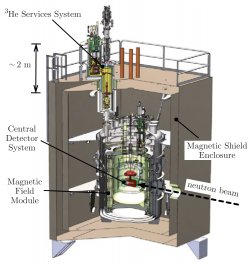
University Calendar
Physics Colloquium: To see a world in a grain of sand: what neutrons can tell us about the Universe

To see a world in a grain of sand: what neutrons can tell us about the Universe
Prof. Kent Leung, Research Assistant Professor
Physics Department
North Carolina State University
Abstract:
Neutrons are the most abundant sub-atomic particle on Earth. However, when on their own they beta-decay with a mean lifetime of around 15 mins, therefore neutrons are only preserved when bound inside a nucleus. Neutrons can be freed from nuclei at nuclear fission reactors or proton-accelerator driven spallation sources where they are released close to the speed of light. They can then be cooled to temperatures of around 20 K to become cold neutrons, or even to 2 mK to become ultracold neutrons. These neutrons are an important tool in low-energy high-precision nuclear and particle physics experiments that also address questions in astrophysics, cosmology, and condensed matter. In this talk, I will introduce the novel techniques we use to reduce a neutron’s kinetic energy by 13-orders-of-magnitude, which includes exploiting the unique quantum excitations of cryogenic superfluid helium. I will then describe two flag-ship experiments in our field: (1) high-precision measurements of the neutron lifetime with magnetically-trapped ultracold neutrons, which allow us to search for new undiscovered forces in the Standard Model and are used in the prediction of the primordial elements formed during Big Bang Nucleosynthesis; and (2) searches for a permanent neutron electric dipole moment, which is needed to understand the yet-unknown process of how more matter than antimatter was created during the Big Bang and would constitute discovery of a new source of time-reversal symmetry violation in physical laws.